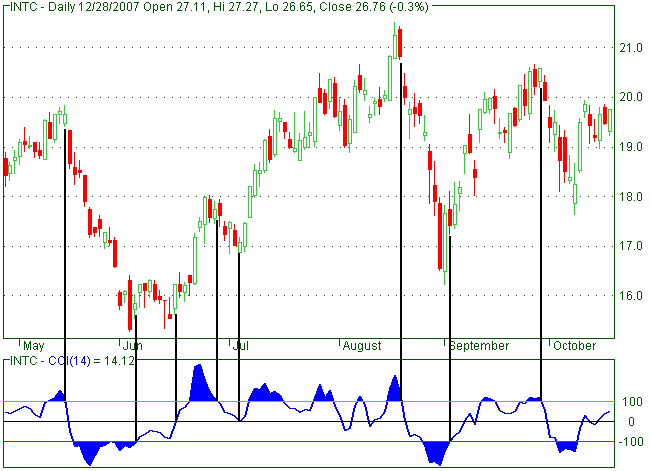|
|
Commodity Channel Index
The Commodity Channel Index (CCI) is an oscillator originally introduced by Donald Lambert in an article published in the October 1980 issue of Commodities magazine (now known as Futures magazine). The CCI is calculated as the difference between the typical price of a commodity and its simple moving average, divided by the mean deviation of the typical price. The index is usually scaled by a factor of 1/0.015 to provide more readable numbers: There are 4 steps involved in the calculation of the CCI:
CCI = ( Typical Price - SMATP ) / ( .015 X Mean Deviation )
The Commodity Channel Index is often used for detecting divergences from price trends as an overbought/oversold indicator, and to draw patterns on it and trade according to those patterns. In this respect, it is similar to bollinger bands, but is presented as an indicator rather than as overbought/oversold levels.
How to use CCI Buy or sell signals happen 20 - 30 % of the time while from 70 up to 80 % of time Commodity Channel Index's value is fluctuating between +100 and -100. It's supposed that if CCI overcomes the level of +100 from below upwards, it means that the currency pair is moving in the direction of the strong ascending trend, thus there is a clear purchase signal. And once CCI goes under +100 the position is supposed to be closed on a return signal. At the same time, it's considered that if Commodity Channel Index moves to -100 point from top to down, it means that the currency pair is meeting a strong descending trend, and there's a sale signal. As soon as CCI again crosses the level of -100 this position is considered closed. One can treat break of trend lines formed on the indicator as input or output signals from a position. At overbought - above +100 - the break of the trend line downwards is supposed a sale signal and at an oversold level - below-100 - the break of the trend line upwards is supposed a signal to growth of the market. Thus these lines are also based on the connection of consecutive maxima or minima.
|
|
|

